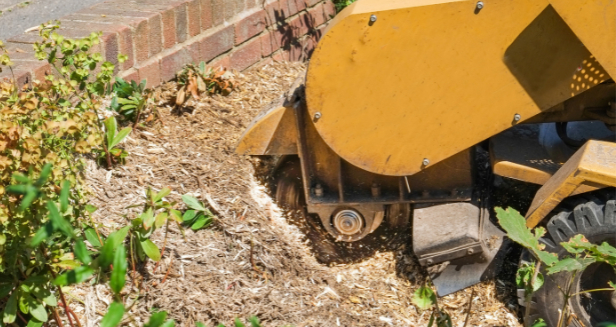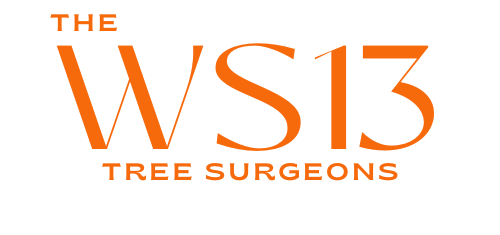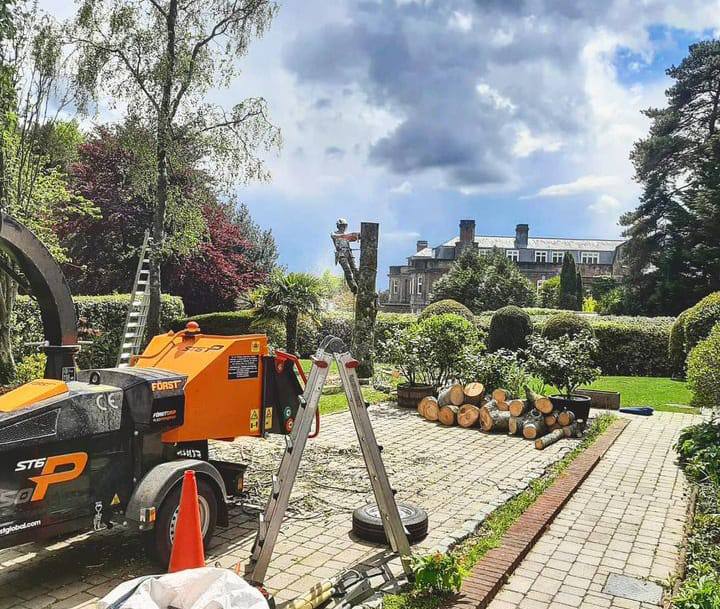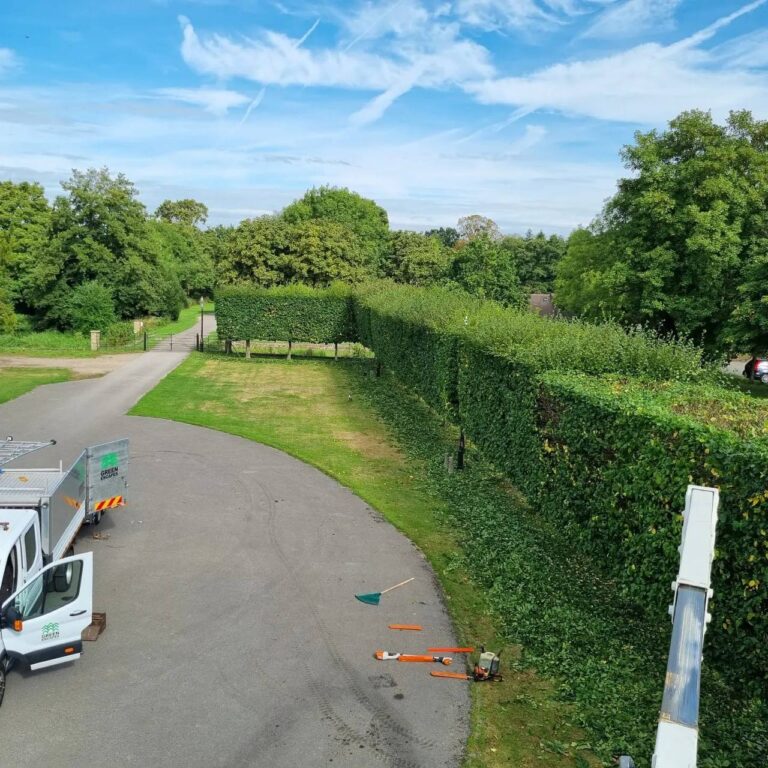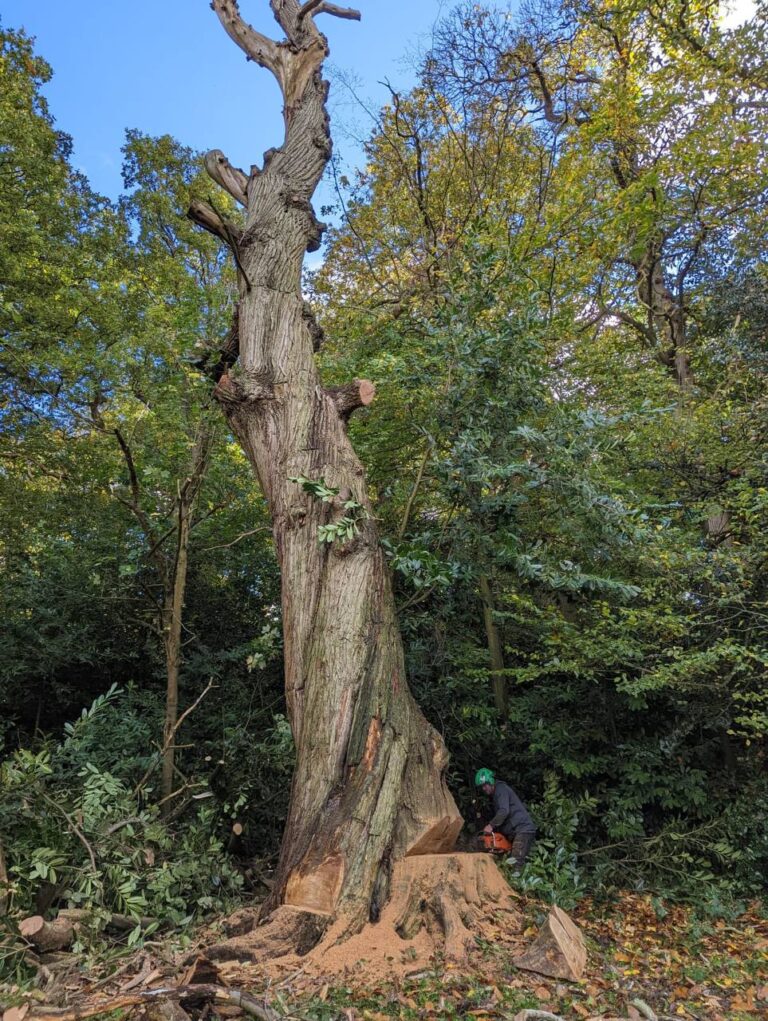Introduction: Tree surgery, a specialised field within arboriculture, involves the care and maintenance of trees in urban and natural environments. Tree surgeons rely on a wide array of specialised equipment and tools to carry out this demanding and often hazardous work. In this blog post, The WS13 Tree Surgeons will delve into the essential tools of the trade used by arborists to ensure the health and safety of trees and the surrounding environment.
1. Chainsaws
Chainsaws are the most recognisable and indispensable tools in a tree surgeon’s arsenal. They come in various sizes and power capacities, allowing for precise cutting and removal of branches and even entire trees. Modern chainsaws are equipped with safety features such as kickback protection and chain brakes, ensuring the safety of both the operator and the tree.
2. Pruning Saws
Pruning saws are designed for precision cutting when removing smaller branches and limbs. They come in various blade lengths and styles, including folding saws for easy transport and manoeuvrability in tight spaces.
3. Hand Pruners and Loppers
Hand pruners and loppers are essential for making clean, accurate cuts when trimming and pruning smaller branches and twigs. Loppers have long handles for added reach and leverage.
4. Pole Pruners and Pole Saws
Tree surgeons use pole pruners and pole saws for branches that are out of reach. These extendable tools allow for controlled cutting while maintaining a safe distance from the pruned branch.
5. Rigging Equipment
Rigging equipment is used to safely lower branches and logs to the ground to prevent damage to property or injury. This equipment includes ropes, pulleys, carabiners, and slings.
6. Climbing Gear
Tree surgeons often need to ascend trees to access branches for pruning or removal. Climbing gear includes harnesses, ropes, ascenders, descenders, and specialised climbing spikes or spurs attached to the climber’s boots.
7. Stump Grinders
After removing a tree, stump grinders are used to grind down the remaining stump below ground level. This allows for replanting or landscaping without the obstruction of the old stump.
8. Wood Chippers
Wood chippers process tree branches and limbs into wood chips or mulch. The resulting mulch can be used for landscaping or disposed of responsibly.
9. Safety Gear
Safety is a paramount concern in tree surgery. Arborists wear personal protective equipment (PPE), including helmets, eye protection, hearing protection, gloves, and safety clothing. Helmets are equipped with visors or face shields to protect against falling debris.
10. First Aid Kits
Accidents can happen in tree surgery, so first aid kits are essential to treat minor injuries immediately. Tree surgeons are trained in first aid to respond effectively in emergencies.
11. Climbing Ropes
Specialised climbing ropes are designed to withstand the stresses of tree climbing and rigging. These ropes are made of high-strength materials to ensure the safety of the tree surgeon.
12. GPS and Surveying Equipment
Tree surgeons use GPS and surveying equipment to assess and map trees and their condition accurately. This helps in planning and executing tree care and maintenance.
Conclusion: Tree surgery requires skill, knowledge, and the right equipment. The tools of the trade, including chainsaws, pruning equipment, climbing gear, and safety gear, enable tree surgeons to carry out their work safely and effectively. The WS13 Tree Surgeons take great pride in their profession, and the careful selection and use of these tools are crucial in ensuring the health and longevity of trees and the safety of the environment and those around them.
Call us on: 01543 220 994
Click here to find out more about The WS13 Tree Surgeons
Click here to complete our contact form and see how we can help with your tree’s needs.
